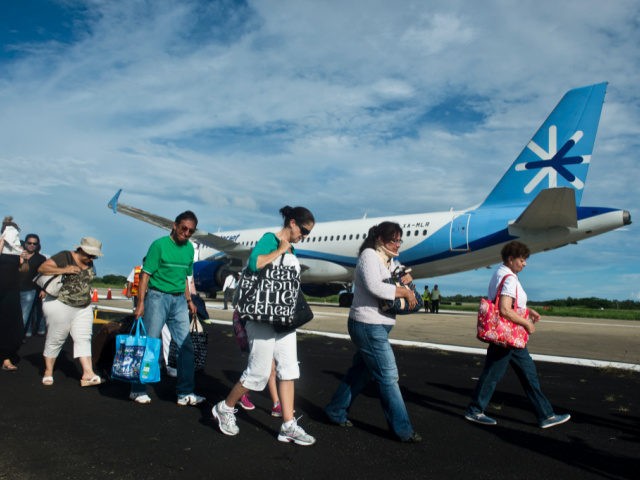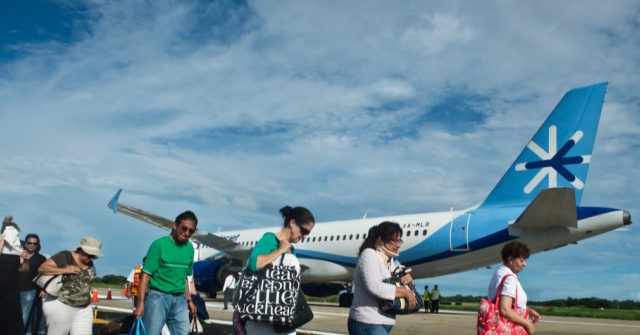A recent shooting at the Ciudad Juarez Airport, resulting in the deaths of two men, has been linked directly to a turf war between human smuggling organizations vying for control over migrant arrivals heading towards the Texas border. Ciudad Juarez, situated just south of El Paso, Texas, is a prominent corridor for drug and human trafficking into the United States.
The incident occurred on a Friday night at the airport, where unidentified gunmen targeted two men traveling in separate vehicles. Despite one victim attempting to flee, the assailants pursued and fatally shot him with rifle-caliber bullets. Investigations suggest a connection between this shooting and a similar event earlier in the year, both indicating a struggle for dominance over the “airport plaza,” a colloquial term referring to turf utilized by organized crime for illegal activities.

Local reports, particularly from El Diario De Juarez, cite federal law enforcement sources identifying “polleros,” or human smugglers, as the primary actors in this turf war. These polleros are instrumental in controlling the flow of migrants, including those seeking asylum, often operating under the umbrella of cartel influence. Cartel-linked human smugglers maintain a stronghold in cities like Reynosa, Tamaulipas, where they facilitate the movement of migrants from airports and bus stations to safe houses or other destinations, largely unimpeded by Mexican federal authorities.
The presence of corrupt agents within Mexico’s National Migration Institute exacerbates the situation, as they collaborate with human smugglers by offering permits and preferential treatment in exchange for monetary gain. This collusion between certain authorities and criminal elements further emboldens the operations of human smuggling networks, allowing them to operate with relative impunity across various transit points.
The ongoing violence and territorial disputes underscore the challenges faced in combating organized crime and securing border regions plagued by illicit activities. Addressing these issues necessitates coordinated efforts between law enforcement agencies, border security measures, and initiatives to combat corruption within governmental institutions, aiming to disrupt the power dynamics enabling criminal enterprises to thrive.


